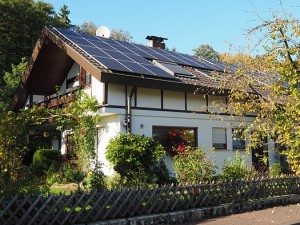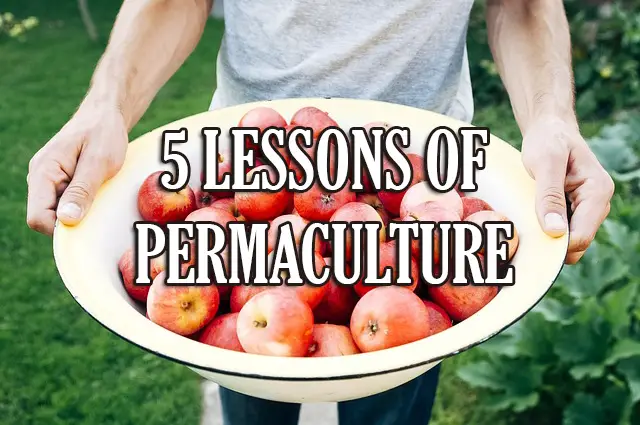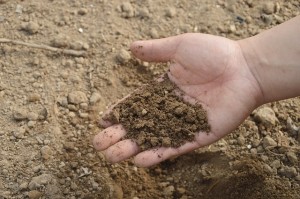The term permaculture was shaped in the 1970s in Australia from two phrases and two movements: permanent culture and permanent agriculture. The founders Bill Mollison and David Holmgren wrote Permaculture One: A Perennial Agriculture for Human Settlements in 1978, which started educating people about its principles.
Based on strong ethics and respect for resources, the book explained how to work with nature instead of against it, how to avoid engaging in “thoughtless labor,” how to create synergy in all parts of your environment instead of looking at them separately, and how to provide for people without destroying the resources.
 Since its origin, permaculture found its way to Cuba in 1990s, and there it started a food revolution that became a prime example of what is possible. With the USSR collapse in 1989, Cuba lost 70% of oil imports and main trading partners. Overwhelmed by hunger (every Cuban lost about 30 pounds of weight), the country turned to sustainable pesticide-free agriculture. Today from 80 to 100% of the produce in Cuba is grown in the same towns that the consumers live in.
Since its origin, permaculture found its way to Cuba in 1990s, and there it started a food revolution that became a prime example of what is possible. With the USSR collapse in 1989, Cuba lost 70% of oil imports and main trading partners. Overwhelmed by hunger (every Cuban lost about 30 pounds of weight), the country turned to sustainable pesticide-free agriculture. Today from 80 to 100% of the produce in Cuba is grown in the same towns that the consumers live in.
“[Permaculture] is the harmonious integration of landscape and people — providing their food, energy, shelter, and other material and non-material needs in a sustainable way. Without permanent agriculture there is no possibility of a stable social order,” – Permaculture Research Institute of Australia
From Australian organic farms to Cuban permaculture successes, here are five main lessons we can learn and use in our society.
1. Creating a food system that works for everyone
Whether a person wants to grow food for themselves, their family, or their community, permaculture provides them with the tools to make it possible, and to make it sustainable and cost-efficient. It is all about observing your environment and making the most use out of it without damaging it. For someone who has any size land it teaches organic gardening and farming, for someone living near water – aquafarming, for those with no land or living in a big city – it teaches how to put raised beds and potted vegetables on patios, rooftops, and parking lots. It also incorporates conscious wild harvesting and forestry.
 2. Conserving energy and using solar-powered appliances
2. Conserving energy and using solar-powered appliances
When Cubans lost their imported energy resources, they had to change the way they use energy. With not enough monetary resources to build big projects such as wind and solar power fields, they focused on smaller renewable energy developments. Two companies — Ecosol Solar and Cuba Solar — stepped up and installed solar photovoltaic panels in houses, schools, and community buildings. A solar panel is enough to power a few appliances, and believing in conservation and small-housing, Cuban families do not have many. The solar companies also produce solar water heaters, solar water pumps, and solar dryers.
The health of the soil determines the abundance of the harvest for years to come. Without using harsh agricultural chemicals for fertilizing, permaculture uses bio-pesticides and bio-fertilizers. People recycle the food waste into compost for the garden and use mulch. Another part of taking care of the soil is cultivating earthworms.
Cuban permaculturists also started using oxen again instead of machinery. The animals are much gentler on the soil and do not compact the soil like the tractor. (Not needing petroleum to run the machinery also saved energy).
4. Conserving water sources
Farms using permaculture techniques get the most out of their water resources. These practices include harvesting rain water, using drip irrigation to water the crops, building water wells, choosing the crops that need less watering, and using mulch to retain water. The executive director of the California Academy of Sciences Jonathan Foley has recently written for The New York Times that he believes applying these methods to farming in the United States, might have helped to avoid the recent California drought problem. In the state where almost 80% of all water used goes into agriculture, changing the way farms use water can make a huge difference.
5. Creating communities
 The permaculture movement in Cuba always had a ‘can do’ mentality. When a non-profit Community Solutions was filming a movie about Power of Community in Cuba, the phrase “Sí, se puede” was heard everywhere — “Yes it can be done.” It takes determination to create change, but also it takes people coming together and thinking about their neighbors.
The permaculture movement in Cuba always had a ‘can do’ mentality. When a non-profit Community Solutions was filming a movie about Power of Community in Cuba, the phrase “Sí, se puede” was heard everywhere — “Yes it can be done.” It takes determination to create change, but also it takes people coming together and thinking about their neighbors.
Growing communities can be done by building eco-villages and co-housing, and having community rooms where everyone can watch television to save energy and meet one another. Making sure everyone has enough food on their table includes inviting WWOOFers – organic farm volunteers to help out, and offering subscription farming.
In the end of it all, permaculture teaches us to forget our belief of separation, being separate from the earth, the animal kingdom and from each other; to put the idea of consumerism aside and instead make wiser choices about how are we using our resources and focus on unity with nature, harmony in society, and sustainability when it comes to food, shelter, water and energy.
“[Permaculture is] an ecological theory of everything. Here’s a planet Earth operating manual. Do you want to go along for a ride with us?” said Co-Founder of the Urban Permaculture Institute of San Francisco David Cody to The New York Times.
This article was first written in April 2017.
Thanks for installing the Bottom of every post plugin by Corey Salzano. Contact me if you need custom WordPress plugins or website design.






